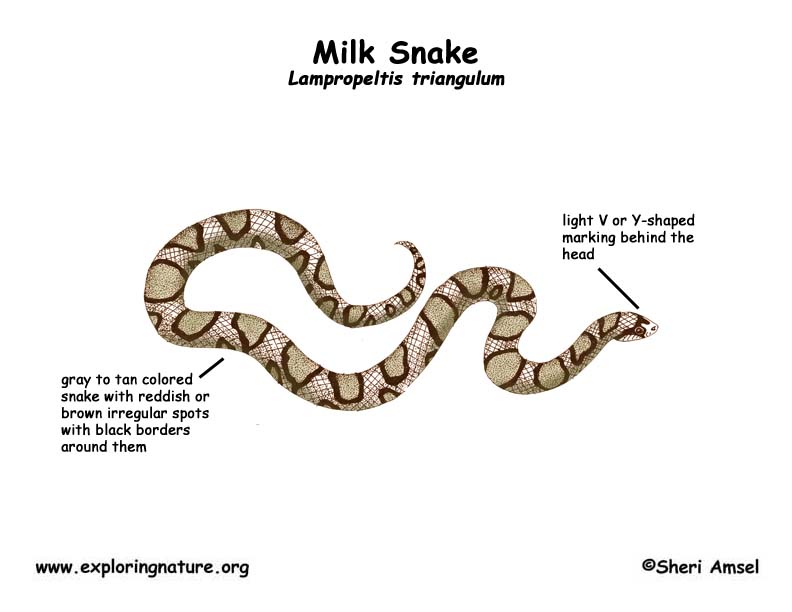

The Eastern Milk Snake is found in the northeastern U.S. south to the Appalachian Mountains and west to Iowa.
They live in grassy areas, farms, the edge of woodlands, open forests and rocky hillsides near water.
They are from 2 - 4 feet long. They are gray to brown colored with large, spotty patterns that are different from snake to snake.
They are active during the day (diurnal) in cooler weather in the spring and fall and then in the summer become active at night (nocturnal). They are shy so not seen very often. They hide under logs, rocks and things found in their habitat: like hay bales and farm debris. They do coil and strike when bothered, but they are not poisonous.
They eat mostly mice, but will take reptiles, amphibians, eggs, birds and insects if they find them. They are a kind of constrictor — that is a snake that kills its prey by squeezing until it can’t breath and dies (suffocation). They are also a kind of king snake so can eat venomous snakes.
They may be eaten by hawks and other predators but are rarely out in the open where predators would find them.
Females lay about 10 eggs that hatch (in about a month) in the fall. When they hatch, they are bright colored; white with red spots.
Kingdom: Animalia
Phylum: Chordata
Subphylum: Vertebrata
Class: Reptilia
Order: Squamata
Suborder: Serpentes
Family: Colubridae
Genus: Lampropeltis
Species: L. triangulum
When you research information you must cite the reference. Citing for websites is different from citing from books, magazines and periodicals. The style of citing shown here is from the MLA Style Citations (Modern Language Association).
When citing a WEBSITE the general format is as follows.
Author Last Name, First Name(s). "Title: Subtitle of Part of Web Page, if appropriate." Title: Subtitle: Section of Page if appropriate. Sponsoring/Publishing Agency, If Given. Additional significant descriptive information. Date of Electronic Publication or other Date, such as Last Updated. Day Month Year of access < URL >.
Amsel, Sheri. "Snake (Milk)" Exploring Nature Educational Resource ©2005-2024. December 13, 2024
< http://www.exploringnature.org/db/view/Snake-Milk >


